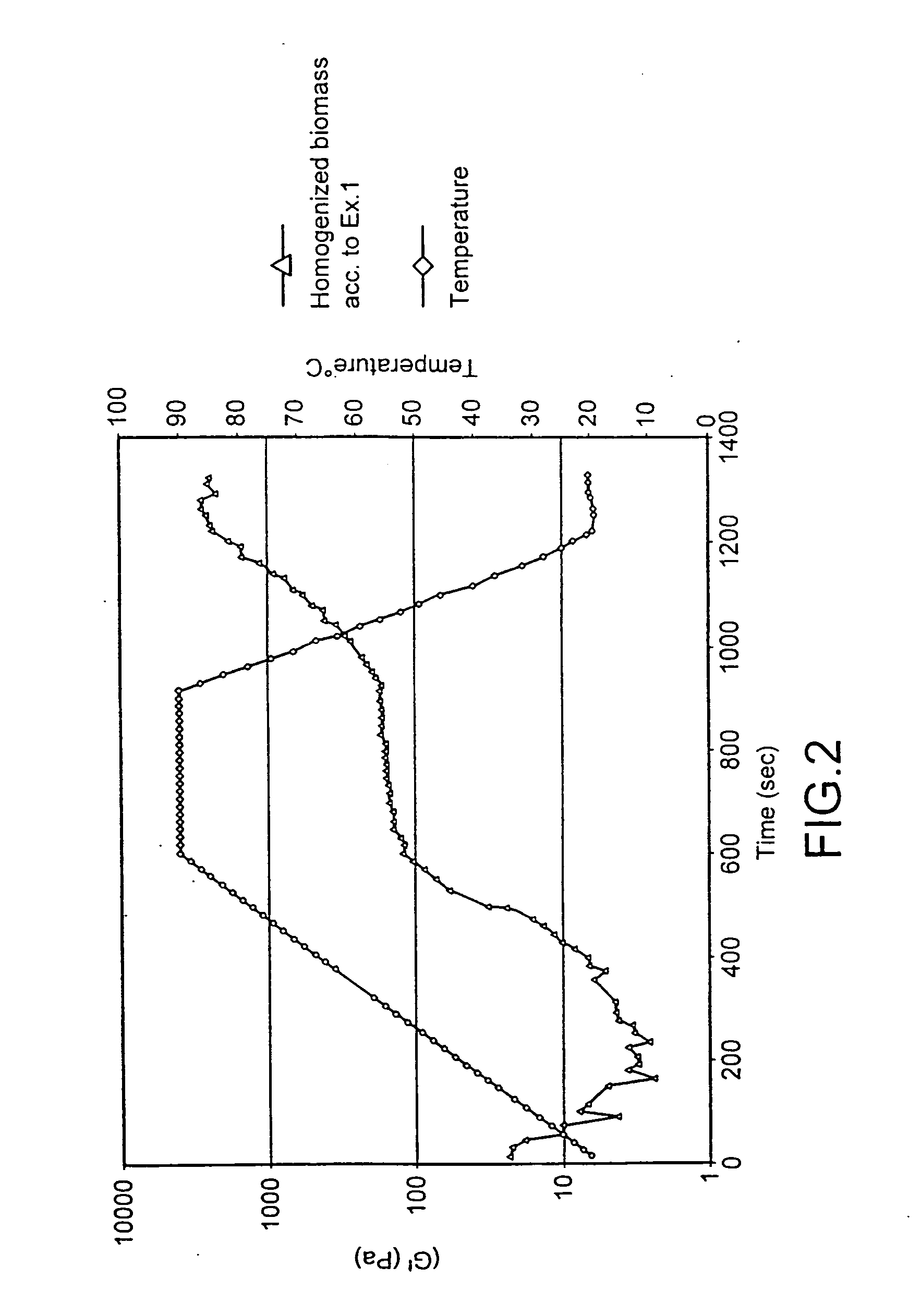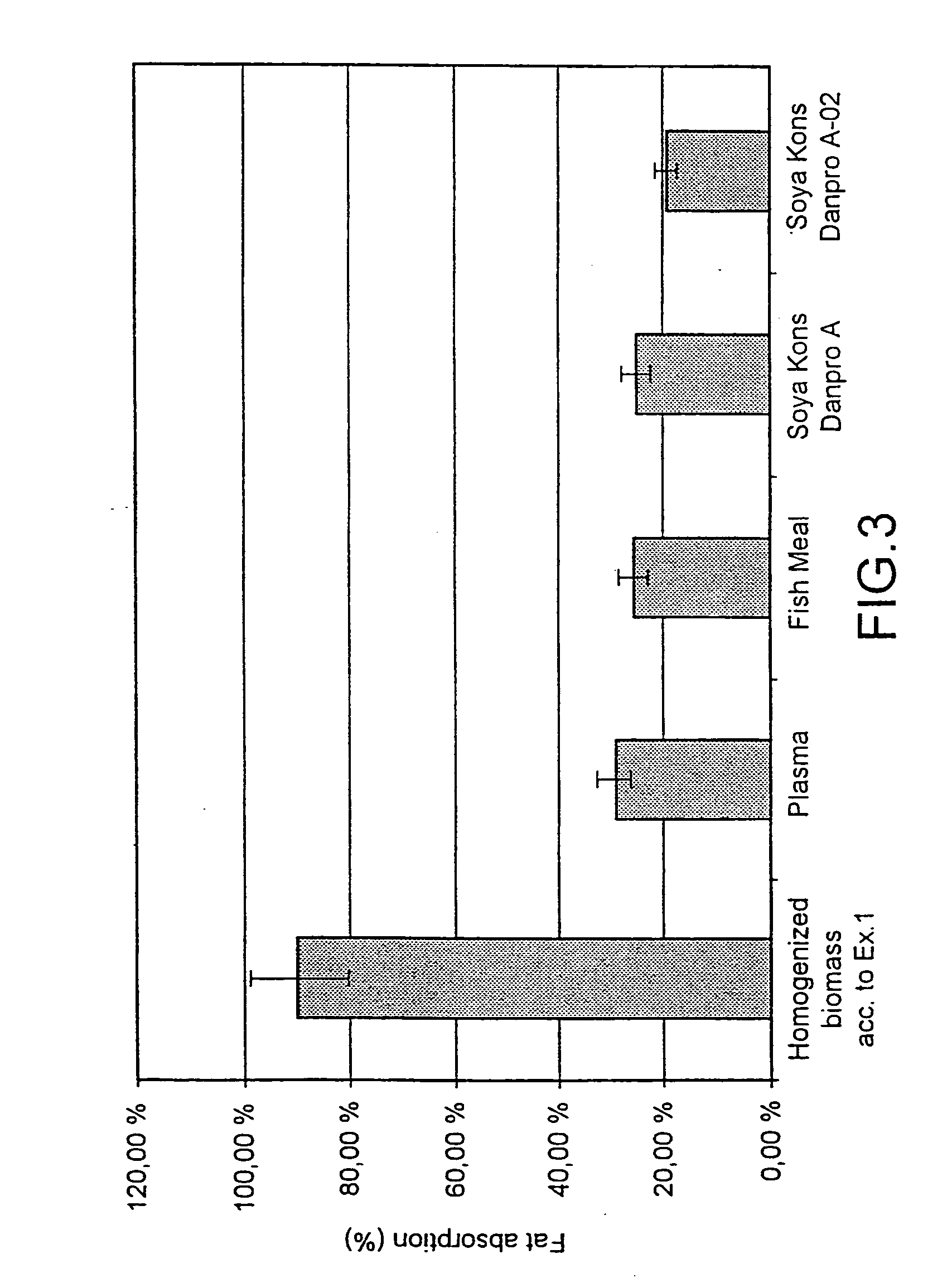Method of extracting proteins from a cell
- Summary
- Abstract
- Description
- Claims
- Application Information
AI Technical Summary
Benefits of technology
Problems solved by technology
Method used
Image
Examples
example 1
Preparation of Homogenized Biomass
[0069] A microbial culture comprising Methylococcus capsulatus (Bath) (strain NCIMB 11132), Alcaligenes acidovorans DB3 (strain NCIMB 12387) and Bacillus firmus DB 5 (strain NCIMB 13280), is produced in a loop-type fermentor by continuous aerobic fermentation of natural gas in an ammonium / mineral salts medium (AMS) at 45° C., pH 6.5, and at a dilution rate of 0.15 h−1. The AMS medium contains the following per litre: 10 mg NH3, 75 mg H3PO4.2H2O, 380 mg MgSO4.7H2O, 100 mg CaCl2.2H2O, 200 mg K2SO4, 75 mg FeSO4.7H2O, 1.0 mg CuSO4.5H2O, 0.96 mg ZnSO4.7H2O, 120 μg CoCl2.6H2O, 48 μg MnCl2.4H2O, 36 μg H3BO3, 24 μg NiCl2.6H2O, 1.20 μg NaMoO4.2H2O.
[0070] The fermentor is filled with water which has been heat-sterilized at 125° C. for 10 secs. Addition of the different nutrients is regulated according to their consumption. Continuous fermentation is operated with 2-3% biomass (on a dry weight basis).
[0071] A single-cell material having the following charac...
example 2
Properties of Homogenized Biomass
2.1 Coagulation / Gelation
[0073] Coagulation can be measured as an increase in elastic modulus (G′) as the protein becomes heat denatured. This may be done in a Paar Physica UDS200 rheometer using a 15% (w / w) solution of the homogenized biomass in 0.2M Na-phosphate, pH 7.2. The instrument measures G′ at a constant strain (1×10−3 Pa) and frequency (1 Hz) whilst the temperature is varied as follows:
20 to 90° C.10 mins 90° C.5 mins90 to 20° C.5 mins20° C.2 mins
[0074] Results for the product produced in Example 1 are shown in attached FIG. 2. Coagulation of the homogenized biomass starts at a temperature between 60 and 70° C. A 10 to 20-fold increase in elastic modulus is observed as the temperature is increased to 90° C. Only a minor increase in elastic modulus is observed whilst the temperature is maintained at 90° C. Cooling to 20° C. results in a further 10-fold increase in elastic modulus.
2.2 Emulsification
2.2.1 Without Stabilisation
[0075] T...
PUM
| Property | Measurement | Unit |
|---|---|---|
| Temperature | aaaaa | aaaaa |
| Temperature | aaaaa | aaaaa |
| Temperature | aaaaa | aaaaa |
Abstract
Description
Claims
Application Information
 Login to View More
Login to View More - R&D
- Intellectual Property
- Life Sciences
- Materials
- Tech Scout
- Unparalleled Data Quality
- Higher Quality Content
- 60% Fewer Hallucinations
Browse by: Latest US Patents, China's latest patents, Technical Efficacy Thesaurus, Application Domain, Technology Topic, Popular Technical Reports.
© 2025 PatSnap. All rights reserved.Legal|Privacy policy|Modern Slavery Act Transparency Statement|Sitemap|About US| Contact US: help@patsnap.com



